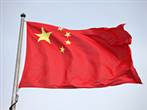
 Remember those WikiLeaks Department of State cables that grabbed the attention of the mainstream media back in late November 2010? Seems like a lifetime ago, doesn’t it? It’s just so “yesterday”, isn’t it?.
Remember those WikiLeaks Department of State cables that grabbed the attention of the mainstream media back in late November 2010? Seems like a lifetime ago, doesn’t it? It’s just so “yesterday”, isn’t it?.Well, apparently, WikiLeaks has just finished leaking Department of State cables and I happened to notice this unclassified gem from the Beijing Embassy dated April 28th, 2009 released on August 30th, 2011. The title of the cable “MEDIA REACTION: U.S.-CHINA-JAPAN RELATIONS, U.S. POLICY, CHINA’S GOLD RESERVES” sounds rather innocuous, doesn’t it. Yet, reading through the last section of the Editorial Quotes, we come upon this interesting paragraph:

Apparently, according to China Radio International‘s newspaper World News Journal, China is accumulating gold in an attempt to lead other countries away from using either the euro or the United States dollar as their reserve currency. It seems evident that China is well aware of the theory that the United States and Europe have conspired to suppress the price of gold to weaken it as a reserve asset, a favourite story from the conspiracy crowd. I find it fascinating that China is discussing using gold as an alternative to the USD and euro with other nations. Talk about hitting the rest of the world below the belt while they are down!
According to financial statistics released by the People’s Bank of China for the first half of 2011, the PBC has gold reserves of 33.89 million ounces or 1054.1 metric tonnes (one metric ton of gold contains 32,150 troy ounces). According to the World Gold Council, China has the sixth largest gold reserves in the world but, as a percentage of their total reserve assets, has a very small gold portfolio in relative terms. Here is a list current to August 2011 showing the top ten country gold holdings and the percent of gold in their total reserves:

As background information, at the end of June 2011, China’s foreign exchange reserves stood at $3.1975 trillion, an increase of 30.3 percent on a year-over year basis. This gives China plenty of foreign currency to add to their gold reserves.
China is in the fortunate position of being the world’s largest gold producing nation. According to statistics from China’s Ministry of Industry and Information Technology, China produced 73.412 tonnes of gold in the first quarter of 2011, up 4.63 percent from the previous year. China has been the world’s largest producer of gold for the past three years with increased production levels every year since 2004. In 2010, China produced 340.88 tonnes of gold, up 8.6 percent from 2009. China projects that gold production will rise an additional 10 percent in 2011. Some analysts note that China’s gold mining companies are in the fortunate position of finding more gold reserves than they are producing.
Not only has China’s central bank prioritized investing in gold, China’s citizens also have quite an appetite for the yellow metal. According to the World Gold Council’s Gold Demand Trends Q2 2011 report, China and India were responsible for 52 percent of global bar and coin investment and 55 percent of global jewellery demand in the second quarter of 2011. On a year-over-year basis, total consumer demand for gold rose 25 percent in China, well above the world average demand growth rate of 7 percent. Back in 2000, China was responsible for only 6 percent of the world’s total gold demand; this climbed markedly to 18 percent in 2010. As of the 2010 year end, total gold demand in China reached 706.7 tonnes. In the second quarter of 2011, jewellery demand in China rose 16 percent on a year-over-year basis reaching 102.9 tonnes.
Chinese consumers prefer 24 carat gold products even at these elevated prices, indicating that there is an investment motive to their purchases. To compare, United States demand for jewellery fell 8 percent on a year-over-year basis to 21.7 tonnes of mainly 10 and 14 carat items. Chinese consumers were the second largest purchasers of gold coins and bars after India, consuming 53 tonnes of gold in coin and bar form. The world’s total gold supply in the second quarter of 2011 reached 1058.7 tonnes, down 4 percent from the previous year.
With China’s central bank sitting on over $3 trillion of foreign fiat currency including the beleaguered euro and United States dollars, it will be interesting to see if they resume their purchases of gold. As stated in the Department of State cable, China’s future moves in the gold market may well translate to additional gold purchases by other nations, weakening the position of both the euro or the USD as their reserve investment of choice. Our current debt, weak leadership and weak economies make us most vulnerable…and my suspicion is that the People’s Bank of China is well aware of their strengths and our weaknesses.
Click HERE to read more of Glen Asher’s columns.
Article viewed on: Oye! Times at www.oyetimes.com
You can publish this article on your website as long as you provide a link back to this page.

“I find it fascinating that China is discussing using gold as an alternative to the USD and euro with other nations. Talk about hitting the rest of the world below the belt while they are down!” – Glen Asher
If the tables were to be turned…